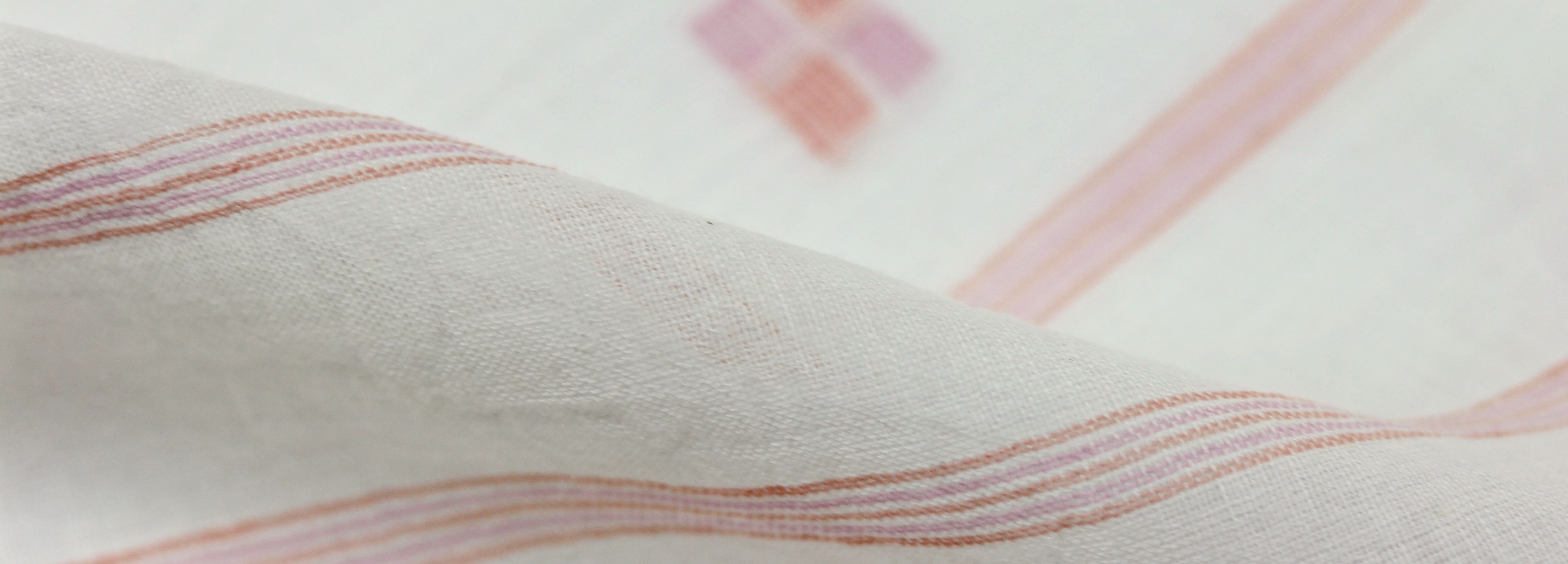Working with Handloom Fabrics

Handloom fabrics are a little different than what we're all used to... here are some tips to making the most of them.
- approach a lightweight handloom cotton, such as jamdani, as you might a fine silk — it is delicate and should be treated with care. However, being cotton, it will handle more easily.
- many handloom fabrics are slightly translucent: you may need to line the garment, or underline/back the fabric. Try something like plain voile for the lining or a separate slip.
- use a fine needle and fine (no. 50 or 60) cotton thread, with a short stitch length.
- plan ahead for seam finishes: they are a must. Consider French seams, bound seams, or a classic turn-and-stitch or pinked-and-stitched seam allowance (on tighter weaves).
- use the very lightest sew-in interfacing as necessary, or none at all, finishing edges with bias bands or piping. Stay-stitching is helpful, too.
- be sure to make a muslin to check the fit of your pattern beforehand — avoid unpicking seams, if possible, because needle holes may show.
- since the fabric is more loosely woven than typical cottons, it works best for more loosely fitted garments where the seams won’t be stressed.
- the fabric may fray a bit or lose its shape slightly after cutting, so handle cut pieces gently before and during sewing.
- the weave is usually fairly even, so you can use fabric on the cross grain for creative placement of stripes or motifs
- similarly, decorative or colored selvedges can be used at the hem or edges of a garment, or applied as trim
- indigo looks great with denim!
- use multiple layers of fabric with the design misaligned to create intriguing effects
- many of the super fine, soft cottons will gather well, to create rich fullness
- imagine fine pin tucks and hand work for baby garments and heirloom sewing
- handloom cottons are perfect for making historical garments - this is just what was used for Regency-era gowns!
